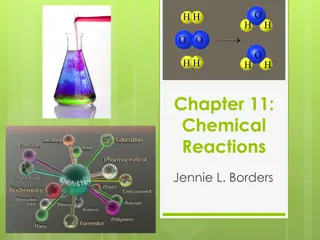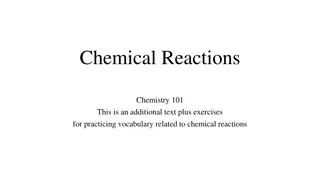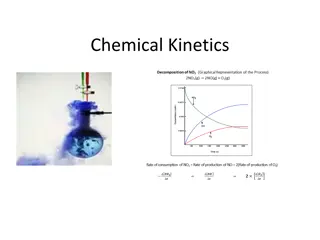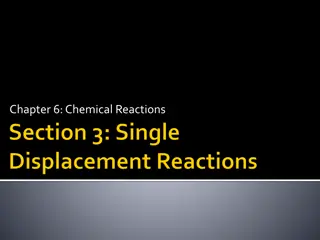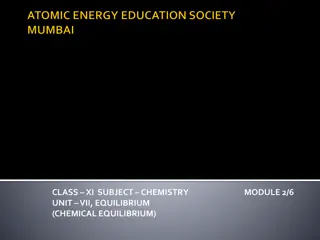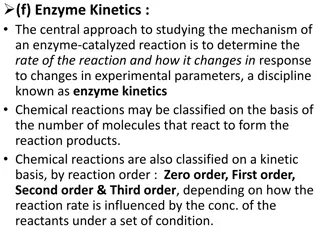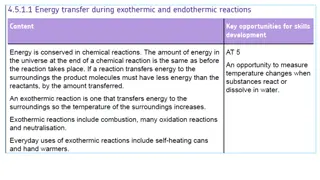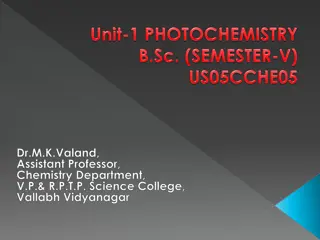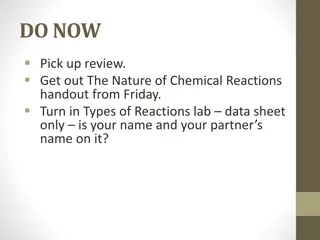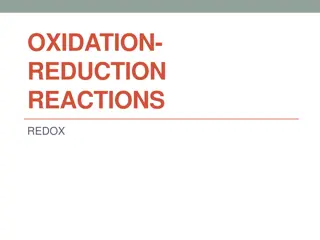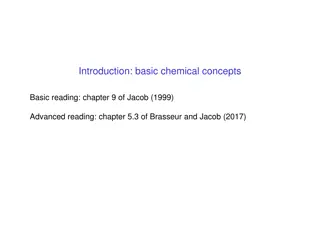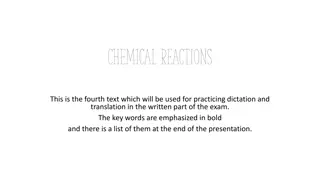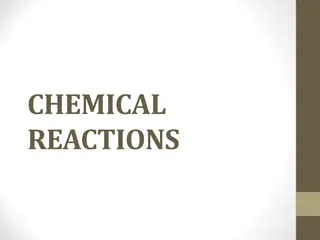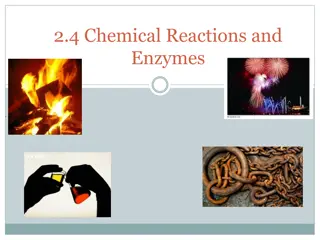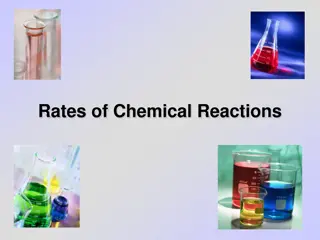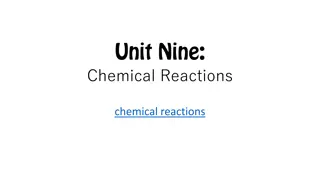Chemical Reactions and Separation Techniques in Chemistry
This presentation covers various chemical reactions and separation techniques in chemistry, including electron configuration, precipitation reactions, chlorine reactions with sodium hydroxide, and apparatus used to separate immiscible liquid layers. Explore topics such as electron configurations of ions, formation of bleach from chlorine, and more.
Download Presentation

Please find below an Image/Link to download the presentation.
The content on the website is provided AS IS for your information and personal use only. It may not be sold, licensed, or shared on other websites without obtaining consent from the author.If you encounter any issues during the download, it is possible that the publisher has removed the file from their server.
You are allowed to download the files provided on this website for personal or commercial use, subject to the condition that they are used lawfully. All files are the property of their respective owners.
The content on the website is provided AS IS for your information and personal use only. It may not be sold, licensed, or shared on other websites without obtaining consent from the author.
E N D
Presentation Transcript
Name the apparatus that could be used to separate two immiscible liquid layers.
Complete the electron configuration of a bromide ion. [1] 1s2.......................................................................................................................... A student adds a small volume of aqueous silver nitrate to an aqueous solution of bromide ions in a test-tube. The student then adds a similar volume of dilute aqueous ammonia to the same test-tube. Describe what the student would see in the test-tube after the addition of aqueous ammonia. [1] Write an ionic equation for any precipitation reaction which occurs in the student's tests. Include state symbols.
The Group 7 element chlorine reacts with sodium hydroxide, NaOH, under different conditions to give different products. Chlorine reacts with aqueous sodium hydroxide to form bleach. Write the equation and state the conditions for this reaction. equation conditions
i. A disproportionation reaction takes place as shown below. 3Cl2(g) + 6NaOH(aq) 5NaCl(aq) + NaClO3(aq) + 3H2O(l) State what is meant by disproportionation and show that disproportionation has taken place in this reaction. Use oxidation numbers in your answer.
Chlorine gas can be added to a cold, dilute alkaline solution to form bleach. Write the equation for this reaction. [1] A student bubbles chlorine gas through aqueous potassium iodide. A reaction takes place. i. State what the student would observe. [1] i. Write the ionic equation for this reaction. Include state symbols. [1]
Outline a simple practical test that would confirm the presence of chloride ions in the lower layer, and give the expected result. test: result: Name the apparatus that could be used to separate the two liquid layers present at the end of the experiment.
Which halogen most readily forms 1 ions? A. bromine B. chlorine C. fluorine D. iodine
HBr(aq), forms two ions in solution. Which observation is correct for reactions of HBr(aq)? A. It effervesces addition of sodium carbonate solution. B. It forms a white precipitate on addition of silver nitrate solution. C. It turns orange on addition of silver nitrate solution. D. It turns brown on addition of potassium chloride solution.
Bromine reacts with iodine to form iodine monobromide, IBr. The table below lists some average bond enthalpies which are required in different parts of this question. Average bond enthalpy is the enthalpy change for the breaking of 1 mole of bonds in gaseous molecules. Why do Br2 and I2 not exist in the gaseous state under standard conditions? Calculate the enthalpy change of formation, fH, for IBr.
Bromine disproportionates when it reacts with potassium hydroxide solution. Suggest an equation for this reaction.
Chlorine is used in water treatment. State one benefit and one risk of chlorine in water treatment. Benefit Risk
Precipitation reactions can be used to distinguish between halide ions. State the reagent needed for these precipitation reactions. [1] How would the appearance of the precipitates allow you to distinguish between chloride, bromide and iodide ions? Chloride Bromide Iodide



